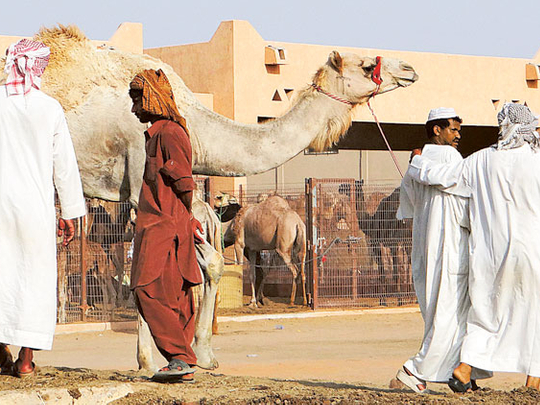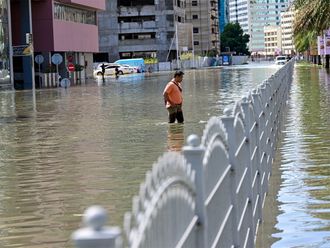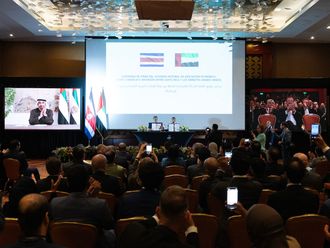
Al Ain: Salesmen yell and rush towards a man as he enters the Camel Market (Souq Al Jamal). Assuming he is a buyer, they offer to show him the finest animal in their pen. If they think the visitor is a tourist, the dashing salesmen will invite him to have his photograph taken with a camel.
The market, perhaps the largest in the UAE, is some 15km away from downtown Al Ain located on Street 137 (Zayed Bin Sultan Street) commonly known as Mezyad Road. Every morning at 7am it comes to life with vendors and buyers exchanging money for camels.
Al Ain camel market is a tourist hotspot. Many of them come from Dubai, Abu Dhabi, and other emirates to see camels. They love to take pictures of them and obtain first-hand information about them.
“Come sir…I’ll show you a baby camel…so cute and lovely,” say some of the persuasive traders inviting and sometimes dragging the visitor towards their pens.
They will start describing the qualities and features of their camels in Arabic, Urdu, Hindi and broken English.
When the visitor takes some snaps, the salesmen demand money, especially from foreign tourists or European residents. Starting from Dh200 they can come down to just Dh10 or Dh20 when the visitors argue with them.
When trading is at its peak the market represents a chaotic place where people yell and run around and camels rattle in their pens.
The situation could be annoying for unaccompanied female visitors as there are some reports of traders behaving aggressively.
“No that’s not true,” said Mohammad Azam, an expatriate trader when questioned about the amount of money asked for when visitors take pictures of the camels.
“We do ask for some money to show them our finest camels and their babies and allow them to take pictures with them…but we don’t force them,” said Azam.
According to Azam, thousands of camels of every breed and description are on sale in this dusty, noisy and pungent environment.
He said it is a market where people yell and talk loudly. Some people see this as aggression.
“They can take pictures freely but when we show them something special, we deserve some favour from them too,” said the trader.
Mohammad Al Kaabi, an Emirati living in Al Ain, said: “For us, the camel is deeply attached to our culture and traditions.”
The animal is still used for milk, meat and sporting activities such as racing. He said Al Ain is a leading agriculture centre and is believed to have the largest camel population in the UAE.
The market is, actually, a testament to Arabian culture and is a must-visit place, especially for foreigners, to understand the camel heritage of the UAE, said Al Kaabi.
“I love camels, especially their babies,” said Patricia Johnson, a resident of Dubai who said she is a frequent visitor to the market.
“Well, I really enjoy watching the intense haggling….It’s fun to watch too,” she said. Johnson, a Danish expatriate, said she never had seen a real camel before coming to the UAE some three years ago.
She was also amazed to hear a couple of years ago about a camel beauty contest.
“It sounded weird to me at first, but now I can say the contest demonstrates the love of Emiratis for this beautiful creature,” she said.
To her the camel’s eyes are the most beautiful feature of the animal. “I love their eyelashes… they are big and very beautiful,” she added.
“I have come to the market many times and never faced a problem but I do offer some money to the traders for showing me their best camels,” she said.
It is a popular tourist place, she said, requesting authorities to set up an information desk at the market to serve visitors along with some security arrangements.












